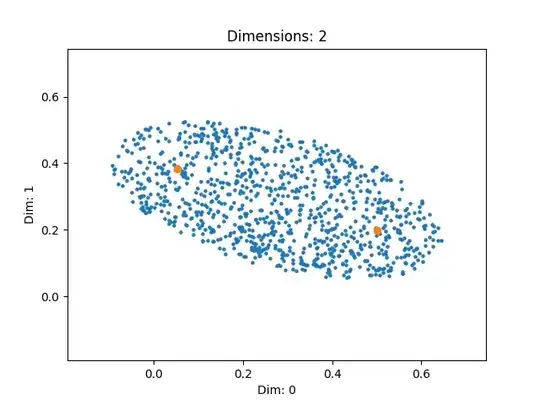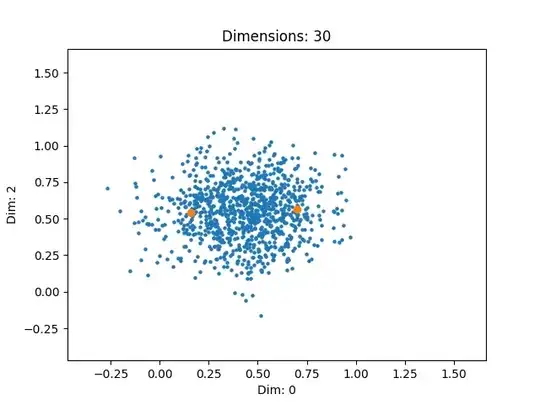I'd like to generate uniformly distributed points within an N-dimensional ellipsoid, where the ellipsoid axes are randomly oriented with respect to the Cartesian axes, and the means along the ellipsoid axes do not necessarily lie on the Cartesian axes. For instance, in 2D, something like the following would suffice:
(I don't have enough reputation to post images yet.) I would like to extend this to any number of dimensions, though, and I would like to be able to set the means and directions of the ellipsoid axes. There are many tutorials online for generating random points on a disk or within a sphere, but it's not obvious how to extend these to an ellipsoid.
Any ideas?


